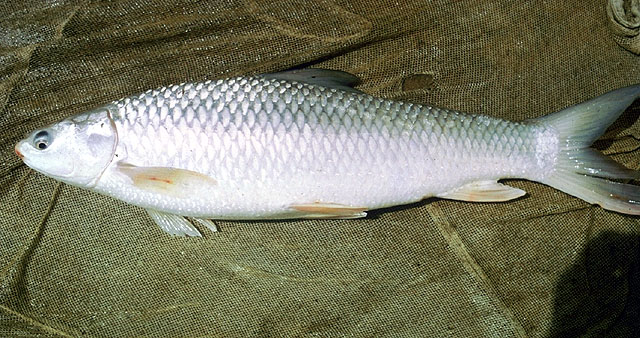| Cyprinidae (Minnows or carps), subfamily: Labeoninae |
| 100 cm SL (male/unsexed); max.weight: 13 kg |
|
benthopelagic; freshwater; brackish; depth range - 5 m, potamodromous |
| Asia: native to large rivers in the Indian subcontinent (Ref. 12693). Has been so widely transported in connection to aquaculture that its natural distribution can no longer be determined (Ref. 33488). |
|
Dorsal spines (total): 0-0; Dorsal soft rays (total): 12-15; Vertebrae: 39. Body plain greyish; 12-15 branched dorsal rays (Ref. 43281). |
| Adults inhabit fast flowing streams and rivers (Ref. 41236). Can tolerate high levels of salinity. Juveniles are omnivorous to about 5 cm TL, adults are almost entirely herbivorous. Feed on plankton, but also grazes on algae. Spawning occurs in marginal areas of the water body with a depth of 50-100 cm over a sand or clay substrate. A 6 kg female can lay a million eggs (of 1 mm diameter) (Ref. 6028). Widely cultured in India but fails to breed naturally in ponds, thus induced breeding is done. Fishery harvests 40 cm fish weighing 1000 g and of about 3 years. A very active fish that thrives in ponds but spawns in swift rivers. Fingerlings are in great demand for stocking ponds between July and November (Ref. 4832). |
|
Vulnerable (VU); Date assessed: 17 March 2011 (D2) Ref. (130435)
|
| harmless |
Source and more info: www.fishbase.org. For personal, classroom, and other internal use only. Not for publication.
